How to plant climbing roses – for a wonderful display
Discover how to plant climbing roses to create that beautiful, bucolic, scent- and color-filled English garden in your own backyard
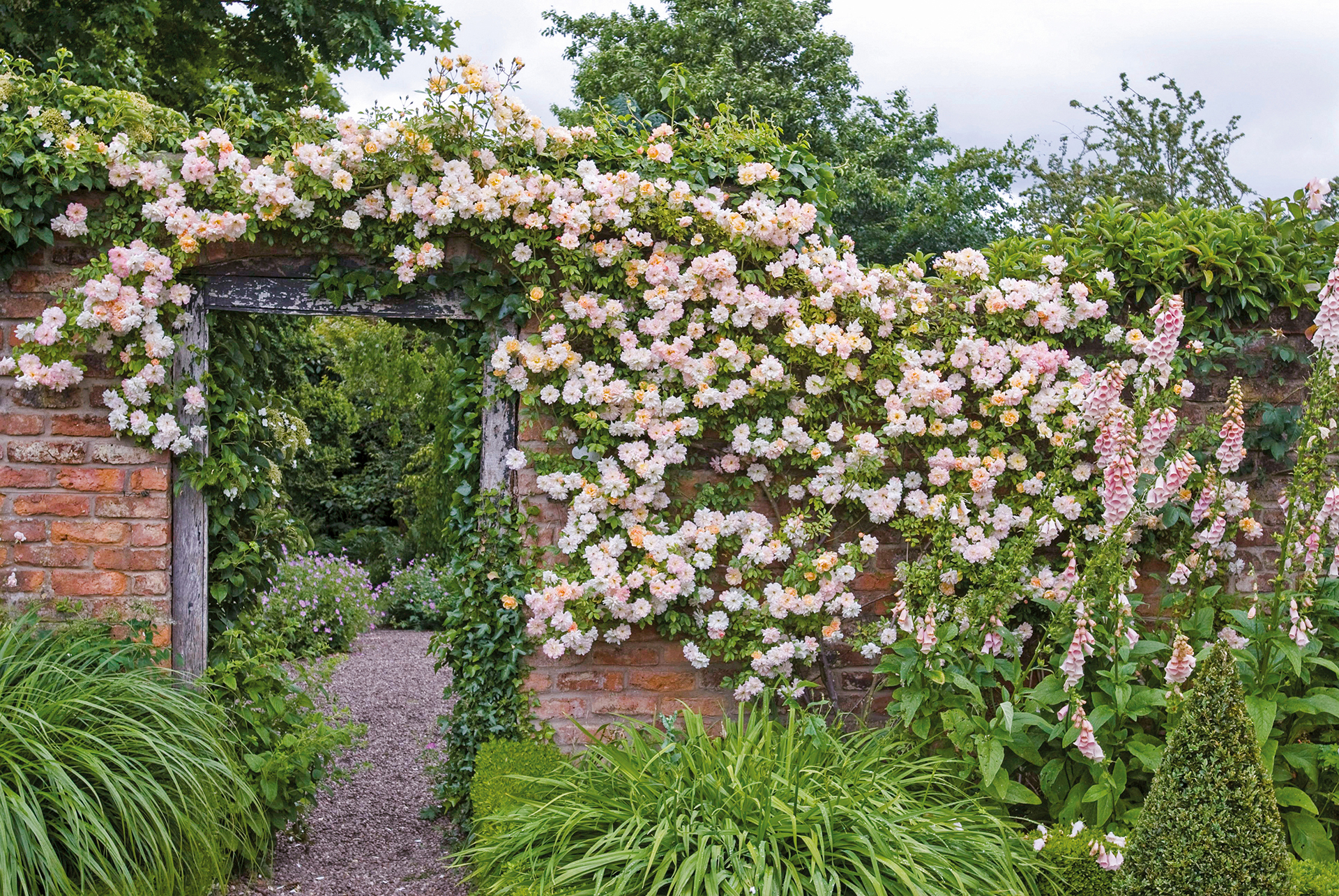

If you love climbing roses, squeeze more of them into the garden by growing climbing varieties. Plant them now, and come summer, they will clad walls, archways, and pergolas with curtains of flowers that fill the air with scent.
There is a wide variety of climbing roses to plant – here, we take you through which climbing roses to plant, where to plant them and how. Although the methods below don't differ too much from planting roses that aren't climbers, we do have expert advice about climbing varieties to impart.
Which climbing roses to plant?
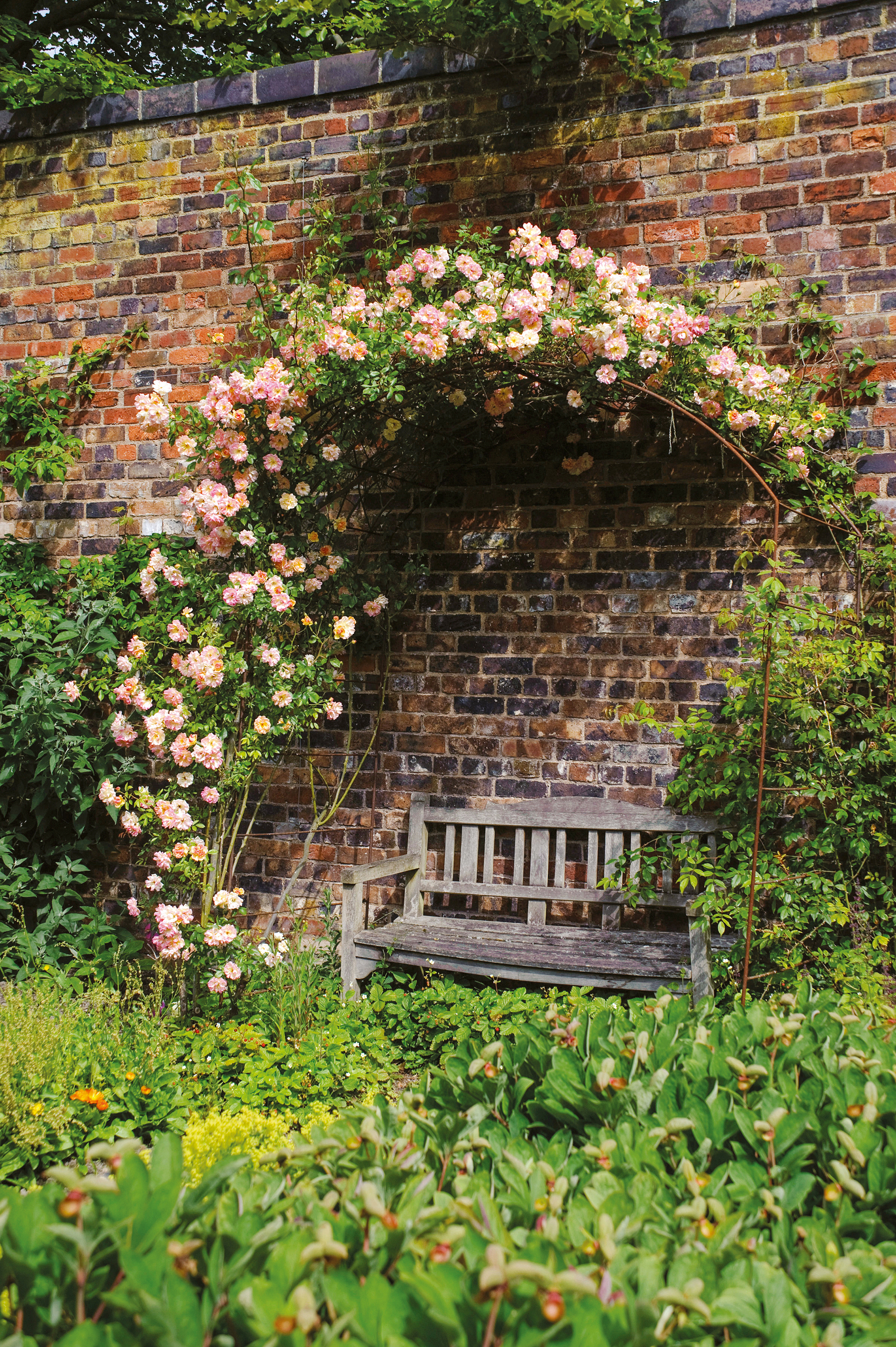
If you are looking for rose garden ideas, take the time to choose the climbing rose that ticks all your boxes. The color of their blooms varies, of course, but so does the hue of their foliage, their height, health, flower shape, and their scent (some don’t smell at all).
Many flower once in summer, while others bloom non-stop until the frosts. Some have single or semi-double flowers that give bees access to nectar; a few are thornless, making them ideal for archways; and a select handful will bloom on a north-facing wall.
If you want a compact climber, Lady of Shalott is a great choice, says leading rose expert and international rose-garden designer Michael Marriott, who worked at David Austin Roses for 35 years: ‘It is a wonderful variety that can be grown as a short 10ft (3m) climber for a fence or wall. It is incredibly free flowering, from June until late in the year. The blooms are a beautiful shade of rich apricot orange and the fragrance has hints of spiced apple and cloves.’
Where a more vigorous climber is sought, London-based garden designer Claire Mee opts for ‘Madame Alfred Carrière’: ‘She’s a favorite – a repeat flowerer with creamy pink-white flowers, thornless (so good for those with young children), tolerates a shady north-facing spot, beautiful to look at, and smells glorious.’
Other great choices include ‘New Dawn’ (pale-pink), ‘Sombreuil’ (cream), and ‘Climbing Étoile de Hollande’ (crimson-red) are all excellent scented climbers that reach around 15ft (4.5m). Shorter options that manage 10ft (3m) or less include Climbing Gertrude Jekyll and Strawberry Hill – two beautifully fragrant pink cultivars.
If you prefer the more informal habit and flowers of rambling roses, Trevor White's ‘Francis E. Lester’ is a fantastic choice. Having a profusion of pink and white single blooms that scent the air and feed bees, followed by orange autumn hips, it is hard to beat.
These climbing roses are some of the best climbing plants you can put into your backyard – and are from the world-famous David Austin nurseries.
When to plant climbing roses
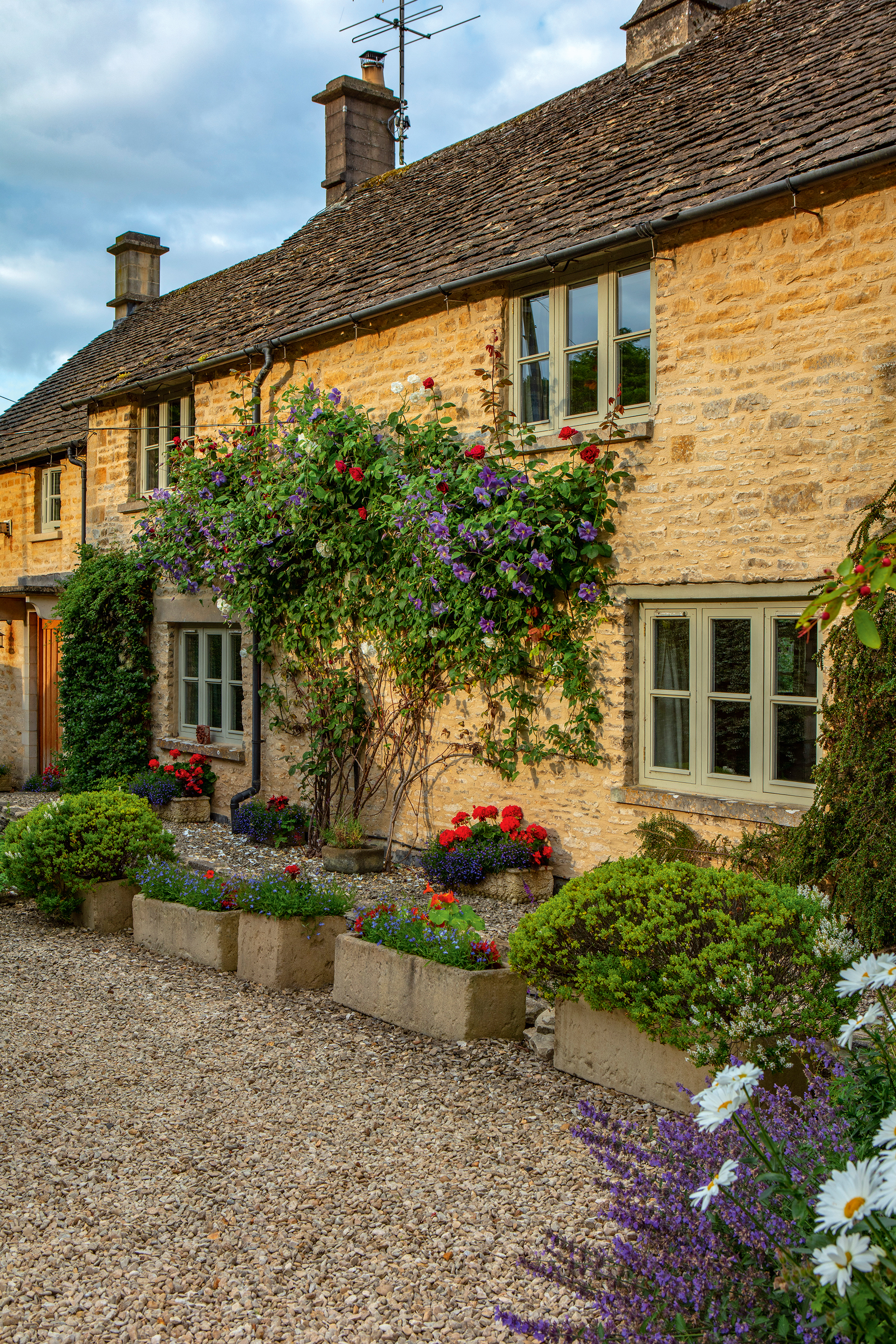
For the best in English garden ideas, containerized climbing roses can be planted at any time of year, but for the healthiest plants, opt to buy ‘bare root’ between November and March. Bare root climbing roses are cheaper and create a more robust root system. They are sold without soil, direct from specialist rose nurseries or by mail order, during winter. Plant them on a day when the ground isn’t frozen or waterlogged.
Where to plant climbing roses
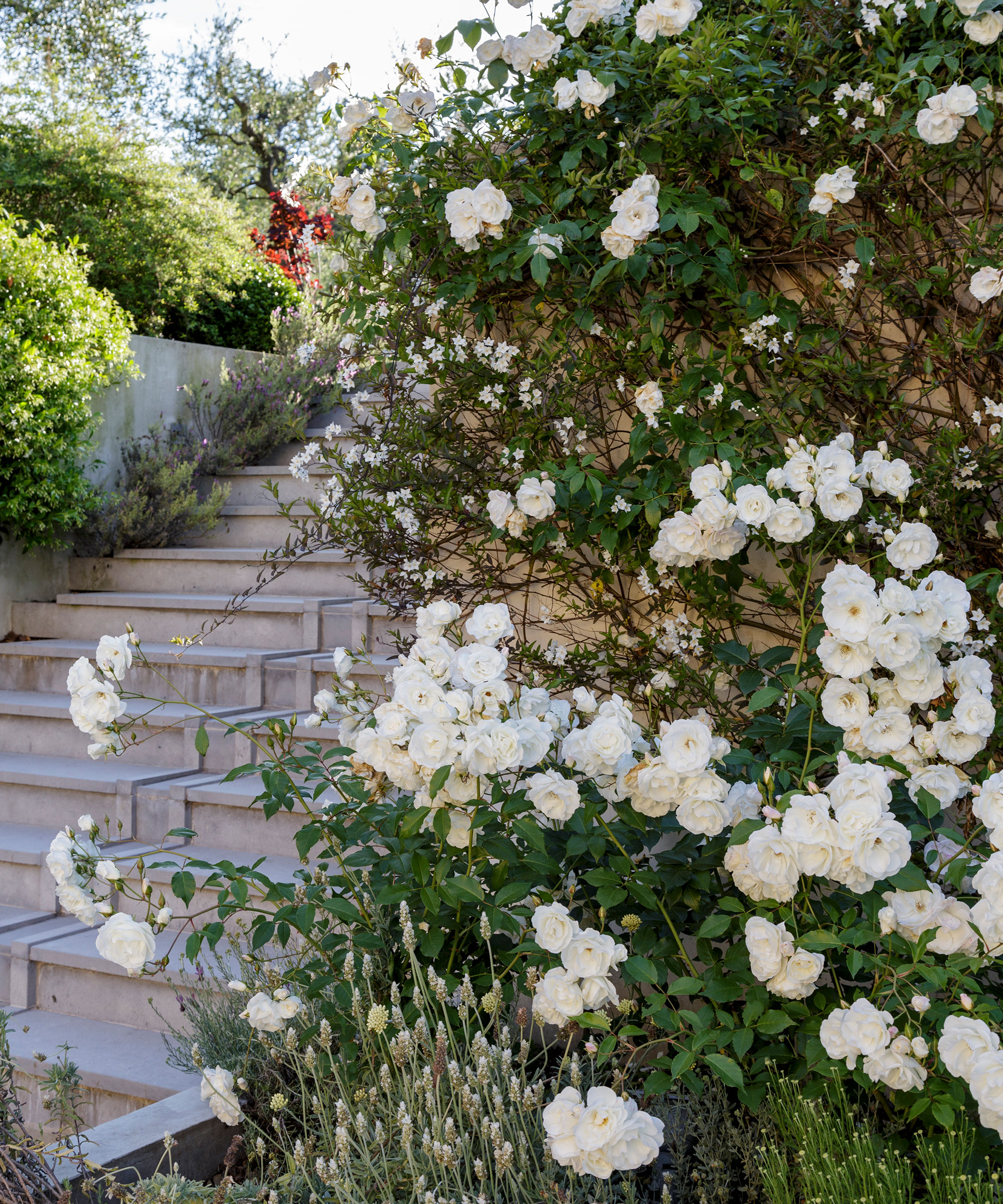
‘Place climbing roses in places where you spend a lot of time or pass by frequently,’ advises Ohio-based garden designer Ethan McGory. ‘This allows you to appreciate the scent and color, as well as changes through the year. The rose hips and stems can be beautiful in winter. A porch or patio is ideal.’
Amongst the best climbing plants with flowers, climbing roses like rich, well-drained, moist neutral to alkaline soil in full sun. To prevent disease, it’s best to choose a site that hasn’t recently had roses growing in it.
‘Climbing roses are great for cladding structures,’ says Massachusetts-based garden designer Maria von Brincken. ‘Pergolas, bowers, and large trellis create the walls of outdoor rooms. Vertical flowering roses in an intimate space created by such structures are superb.’
For something a bit different and to create a charming focal point in the garden, London-based garden designer Claire Mee loves sending roses through trees. ‘It’s an interesting way to include a rose in a garden,’ she says. ‘For example, Rosa banksiae ‘Lutea' will happily grow through an existing tree.’ Make sure that tree is the right size to accommodate the rose you select, so that the tree isn’t damaged.
How to plant climbing roses
Use these steps to plant climbing roses successfully.
1. Prepare climbing roses for planting
Soak the roots of your bare root rose in water for an hour.
Prepare a hole that’s wider and deeper than the rose’s roots; loosen the ground beneath very well with a fork, and dig in well-rotted manure or organic compost.
2. Feed the climbing rose's roots
Sprinkle mycorrhizal fungi onto the roots while holding the rose over the hole. This will stimulate root growth, creating a more robust plant.
3. Check the soil level
The graft (the bulbous join between the roots and the stems) should be 2in (5cm) below the surface.
Now backfill with soil. Then – to prevent air pockets – gently press down the soil with your foot. Finally, water in.
How to care for climbing roses
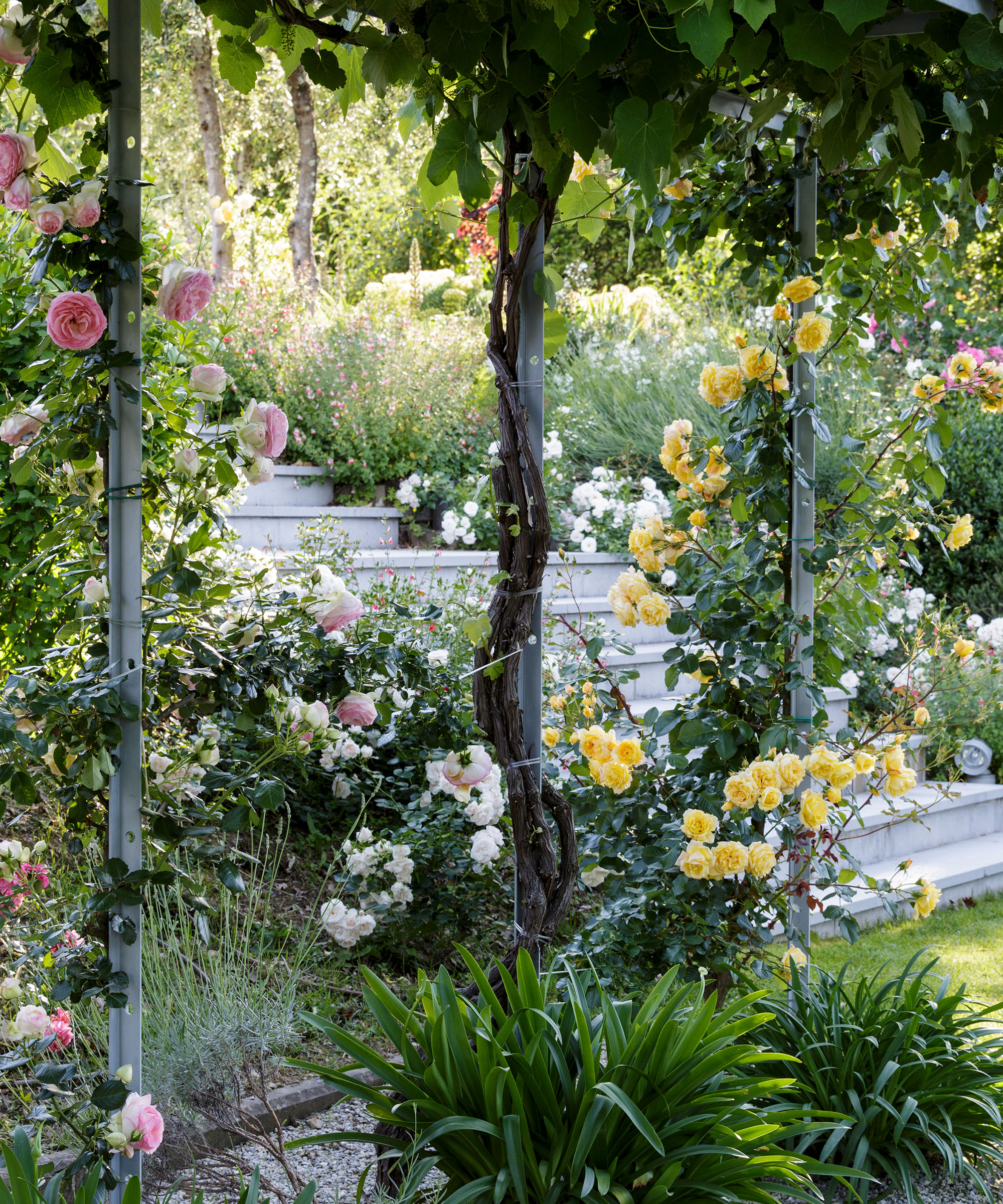
Feed after pruning with rose fertilizer and give a liquid tomato feed fortnightly in summer at half the recommended dose.
Mulch annually in March, by placing a layer of well-rotted manure or organic compost around the plant.
Use companion planting: growing climbing roses with perennials, rather than cultivating them en masse with nothing but other roses, helps to reduce disease. Salvias (such as ‘Cerro Potosí’) are especially good as their sulphur content is thought to prevent rose sickness.
Deadhead repeat-flowering climbing roses to stimulate more blooms. But don’t behead once-flowering roses that produce autumn hips.
Prune climbing roses in January or February, and prune rambling roses in autumn, after their show of hips has finished. Stay safe by using sturdy ladders and shoes with good grip, and never prune climbers when you are tired.
For a safer, easier way to prune – especially for gardeners who aren’t steady on their feet – grow a climbing rose close to the ground, suggests Maryland-based landscape architect and designer Kirsten Coffen. ‘My favorite way to integrate a climbing rose into a garden is to plant and train a climbing rose along a cottage-garden style fence. It’s a beautiful way to create a long horizontal accent that will provide structure and a back drop to other lower blooming perennials in front of the fence. Since roses require frequent pruning and deadheading, those tasks are easier to perform when all parts of the plant are growing within reach, so you don’t need a ladder.’
Sign up to the Homes & Gardens newsletter
Design expertise in your inbox – from inspiring decorating ideas and beautiful celebrity homes to practical gardening advice and shopping round-ups.

Lucy Searle has written about interiors, property and gardens since 1990, working her way around the interiors departments of women's magazines before switching to interiors-only titles in the mid-nineties. She was Associate Editor on Ideal Home, and Launch Editor of 4Homes magazine, before moving into digital in 2007, launching Channel 4's flagship website, Channel4.com/4homes. In 2018, Lucy took on the role of Global Editor in Chief for Realhomes.com, taking the site from a small magazine add-on to a global success. She was asked to repeat that success at Homes & Gardens, where she has also taken on the editorship of the magazine.
-
 Miley Cyrus breaks a cardinal decorating rule with her 'floating table' – her unexpected layout transforms a dead space into a stylish breakfast area
Miley Cyrus breaks a cardinal decorating rule with her 'floating table' – her unexpected layout transforms a dead space into a stylish breakfast areaThe singer tosses aside the maxim that furniture shouldn't be floating in the middle of the room with an innovative kitchen layout
By Sophie Edwards Published
-
 It’s a concept straight out of a fashionista's playbook, but I used the Sandwich Method to organize my kitchen shelves – it’s never looked sleeker
It’s a concept straight out of a fashionista's playbook, but I used the Sandwich Method to organize my kitchen shelves – it’s never looked sleekerIt transformed messy to mesmerizing in a matter of seconds
By Punteha van Terheyden Published